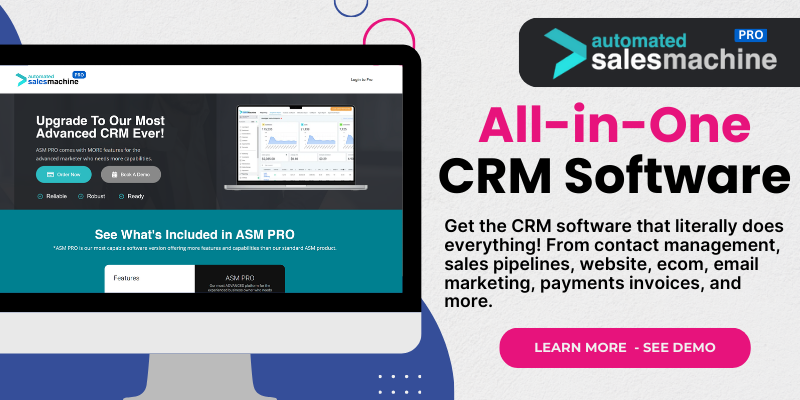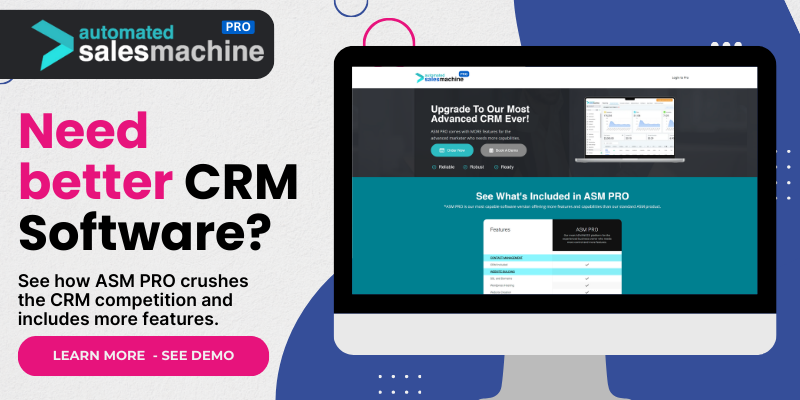Understanding CRM Software
Defining CRM
Customer Relationship Management (CRM) software is designed to help businesses manage their interactions with current and potential customers. From my experience, it’s all about understanding customer behaviors and preferences to improve relationships. Think of it as your central hub for tracking data about customers, leads, and prospects. It helps streamline processes and improve profitability.
A good CRM system collects and organizes customer information from various channels, making it easier to cater to their needs. It’s like having a personal assistant that remembers every little detail about your interactions with clients—really handy, right?
What can you do with CRM? You can track sales, manage contacts, automate marketing tasks, and even provide better customer service. It’s the backbone of effective sales strategies and customer retention efforts.
Key Features of CRM
CRMs are packed with features that can boost productivity. One of the biggest draws is the ability to automate repetitive tasks. For instance, if I send follow-up emails, a CRM can schedule them automatically. Pretty cool!
Additionally, CRMs often have reporting tools that analyze sales trends and customer interaction data. This way, I can make data-driven decisions rather than just gut feelings. It’s the difference between shooting in the dark and actually aiming at the target.
The integration capability is another attractive feature. Many CRMs can sync with other applications like email and e-commerce platforms. This creates a seamless workflow, ensuring that all necessary information is at my fingertips.
Who Should Use CRM?
If you’re in sales, marketing, or customer service, a CRM is a must-have. I often tell my colleagues that if you want to stay organized and foster better relationships with customers, you need a solid CRM system. It helps me keep tabs on my clients and prioritize my outreach efforts.
Even small businesses can benefit from CRM software. It’s not just for the big guys. If you’re struggling to track leads and keep customer information organized, it might be time to consider investing in a CRM.
In essence, if your work involves customer interaction, a CRM is beneficial. It enhances customer experience and ultimately drives sales. Trust me, once you start using it, you’ll wonder how you ever lived without it!
Diving into PRM Software
Defining PRM
Partner Relationship Management (PRM) software deals with managing business relationships with partners. Unlike CRM, which focuses on customers, PRM is more about collaboration and engagement with external partners—like affiliates, resellers, or suppliers. From what I’ve seen, it’s all about fostering those relationships to drive mutual growth.
PRM often includes tools that facilitate communication, provide training resources, and track partner performance. The aim is to have an aligned structure that encourages partners to sell more while maintaining a strong brand identity.
In my experience, using PRM software helps streamline the partner experience, ultimately enhancing cooperation and productivity across various channels. For businesses looking to scale through partnerships, this is where the magic happens!
Key Features of PRM
PRM tools often come loaded with features like lead distribution, performance tracking, and training modules. For instance, I love that many PRM systems offer dashboards that show how each partner is performing in real-time, allowing us to strategize effectively.
Another crucial feature is the co-branding and marketing resources available for partners. Partners can easily access the necessary assets like logos, brochures, and social media content to help them promote your products. This makes the partnership feel like a true team effort, ensuring that everyone’s on the same page.
Like CRMs, PRM systems can also integrate with other tools, enhancing functionality and allowing for a comprehensive approach to partnership management. This integration keeps everything organized and lets me focus on nurturing the relationships rather than being bogged down by admin work.
Who Should Use PRM?
If your business relies on external partners for sales or distribution, a PRM solution is a game changer. It’s particularly helpful for companies in franchise models, affiliate marketing, or anyone looking to expand their reach through collaboration. You got to see this as a win-win!
Using PRM software is ideal for businesses that seek to enhance their partnerships. It provides the necessary tools to ensure that partners feel supported, valued, and aligned with your business goals.
Ultimately, if you’re looking to grow through partnerships—or already are—don’t overlook the value of PRM software. It can elevate your partner relationships and drive overall business success.
Comparing CRM and PRM Software
Focus Areas
While both CRM and PRM software help manage relationships, their focus areas differ. CRM revolves around customer relationships, while PRM focuses on partner management. From my own observations, if you want to streamline customer interactions, go for CRM. If aligning strategies with partners is your goal, PRM is the way to go.
This focus leads to using differing features. For example, CRM might emphasize sales automation and customer service tools, while PRM stresses tools for collaboration and performance metrics.
Ultimately, understanding these distinctions helps businesses choose the right tool for their needs. Integrating both can offer a broader strategy that encompasses all relationship facets, internal and external.
Integration and Usability
Many businesses face the challenge of integration between different software solutions. Both CRM and PRM systems often integrate with other tools, but the learning curves can vary. In my experience, sometimes the complexity of features can be overwhelming, especially for those new to the software.
A flexible PRM system might have user-friendly interfaces that provide a smoother onboarding experience for partners. On the other hand, CRMs typically offer robust training resources and support as well to help users get the most out of their systems.
Choosing software that integrates seamlessly into your existing operations is crucial. Whenever a system is easy to use, both your team and partners will be more likely to engage, maximizing the software’s potential.
Scalability and Growth
When my business was growing, scalability became vital. Both CRM and PRM systems scale differently. CRMs generally scale by adding more users and functionality, while PRM systems need to cater to multiple partners simultaneously. Understanding this distinction is important for future planning.
As your business grows, ensure your chosen software can accommodate increased workloads without becoming cumbersome. I always suggest evaluating potential growth scenarios when selecting a solution, as this foresight can save a lot of time and money down the road.
Growth strategies often require both CRM and PRM tools. By aligning customer and partner strategies, it’ll streamline processes, allowing for an even greater focus on meeting business objectives.
Choosing the Right Solution for Your Business
Evaluating Business Needs
The first step in choosing between CRM and PRM is evaluating your specific needs. Reflect on your business model—do you prioritize customer service or partnership growth? This will help dictate which solution might serve you better.
I often recommend making a list of features you need versus nice-to-haves. By prioritizing essential functions, you’ll be more likely to select the right tool that fits your organization like a glove.
In my experience, engaging your team in the decision-making process is also key. Their insights might uncover aspects of customer and partner relationship management you hadn’t considered. After all, they’re the ones who will be using the tool daily!
Budget Considerations
Next up, budget. Both CRM and PRM solutions come at various price points, so it’s essential to identify what you can comfortably spend. It’s vital to consider not just the upfront costs but also ongoing operational expenses.
Always weigh those costs against the potential return on investment. If a PRM helps you land lucrative partnerships that drive revenue, it may be worth the investment—even if it’s a bit pricier upfront. Likewise, a solid CRM can lead to increased customer satisfaction and retention, ultimately bringing more revenue.
Just remember, sometimes spending a little more on an excellent system can save money in the long run by preventing inefficient processes!
Trial and Feedback
Finally, don’t forget to take advantage of free trials! Most software platforms offer trial periods, which I always recommend utilizing. It’s the best way to get hands-on experience and see if it meets your needs.
During the trial, engage with your team closely. Collect feedback on usability and how well each tool aligns with your workflow. This will help you gauge if the solution is a good fit.
Regular feedback sessions during this period can reveal what works and what doesn’t—ultimately guiding you to a more informed decision.
FAQ
1. What is the primary function of CRM software?
CRM software primarily functions to manage a company’s interactions with current and potential customers. It helps in tracking and analyzing customer behavior to improve business relationships.
2. How does PRM differ from CRM?
PRM focuses on managing relationships with external partners, while CRM is centered on customer relationships. PRM tools enhance collaboration with those partners to drive mutual growth.
3. Can both CRM and PRM be integrated?
Yes! Many CRM and PRM systems offer integration features that allow businesses to maintain cohesive operations, ensuring both customer and partner relationships are managed effectively.
4. Who should consider using PRM software?
Businesses that rely on external partners for sales, distribution, or collaboration should consider using PRM software. It’s perfect for affiliate marketers, franchises, and companies looking to expand through partnerships.
5. How do I choose the right CRM or PRM solution for my business?
Start by evaluating your business needs, considering your budget, and trialing different options. Gather feedback from your team to ensure that the software aligns with your goals and workflow.

